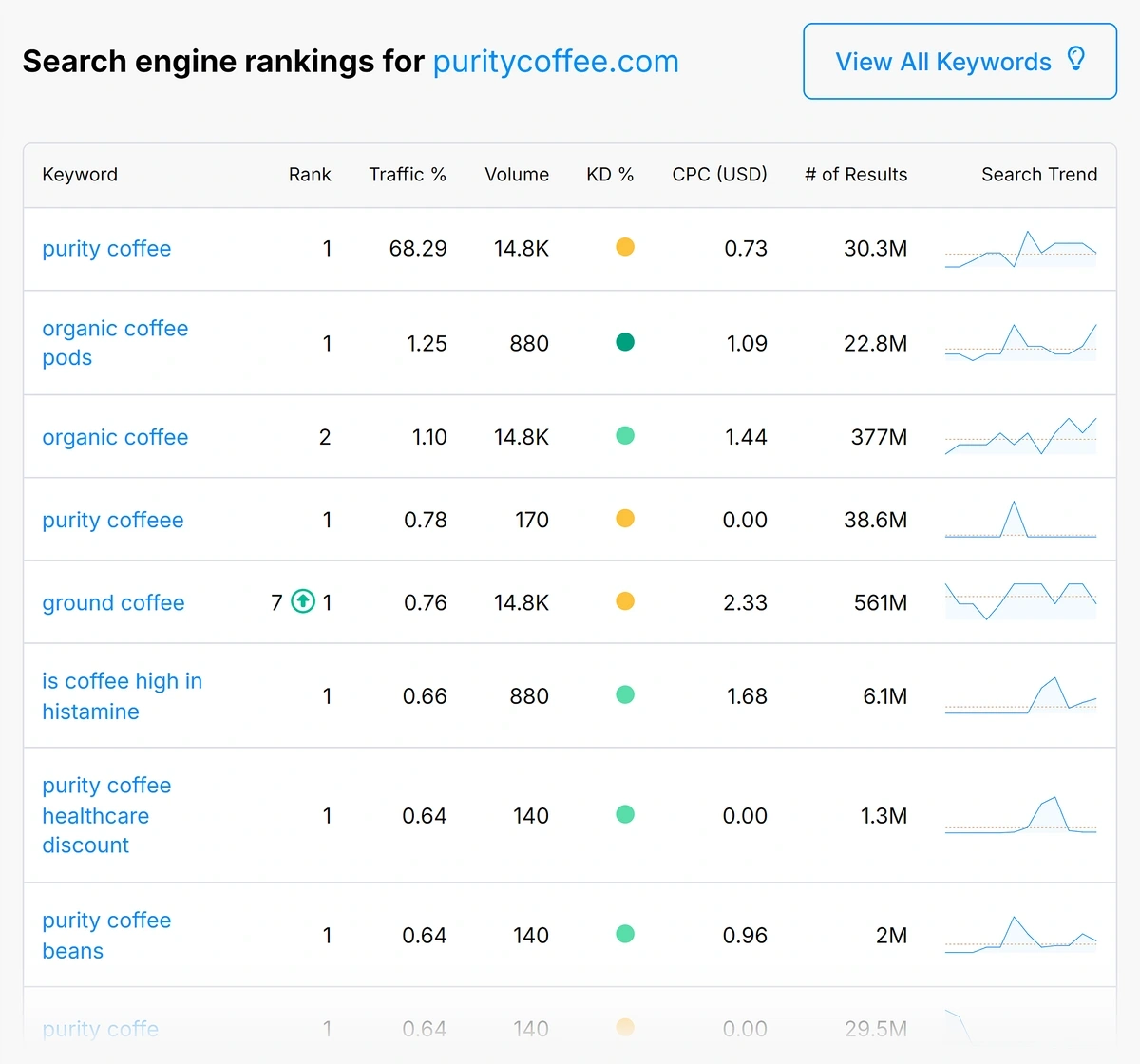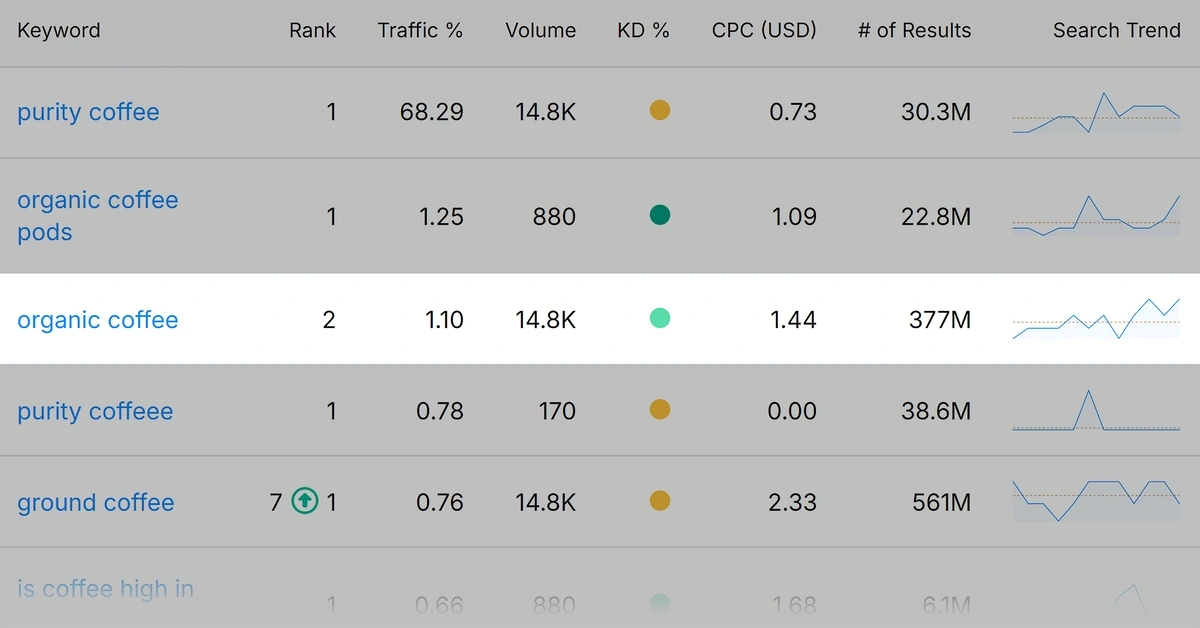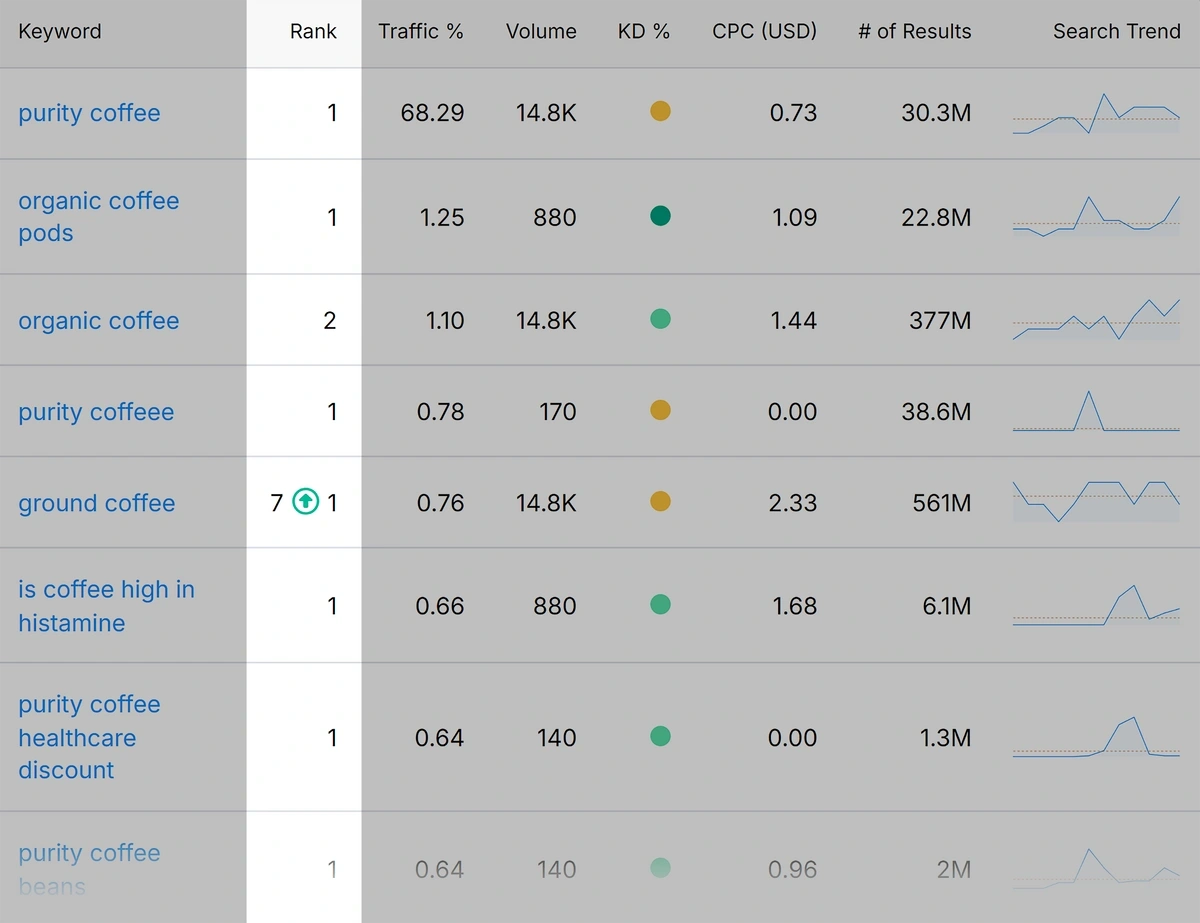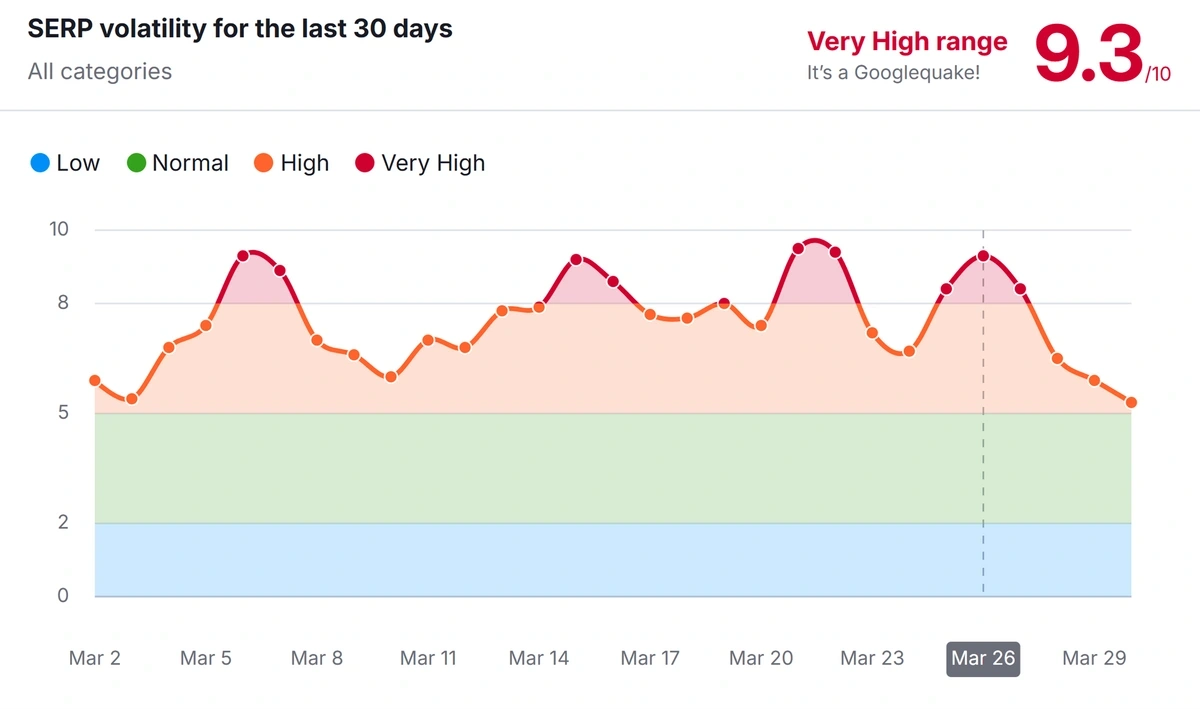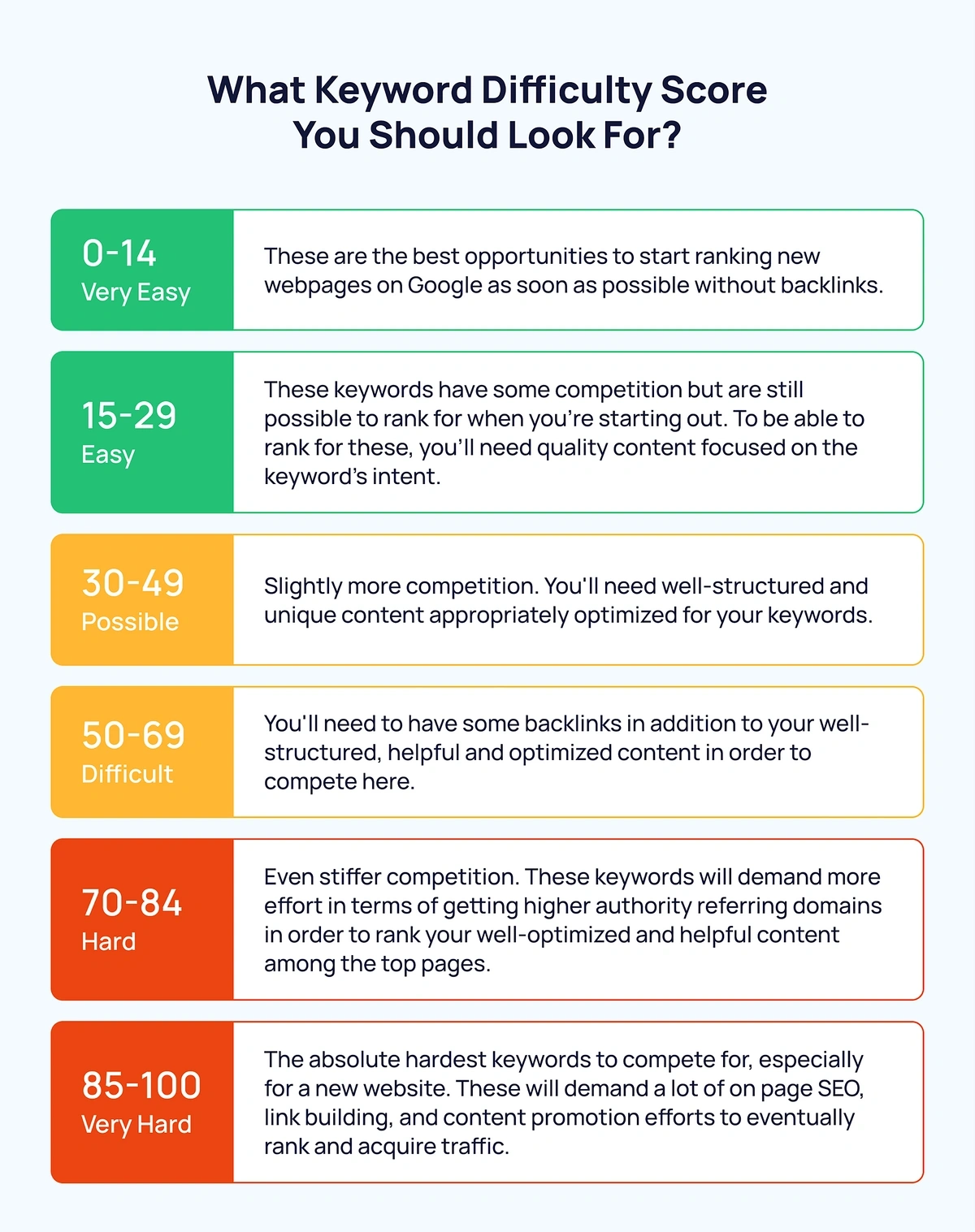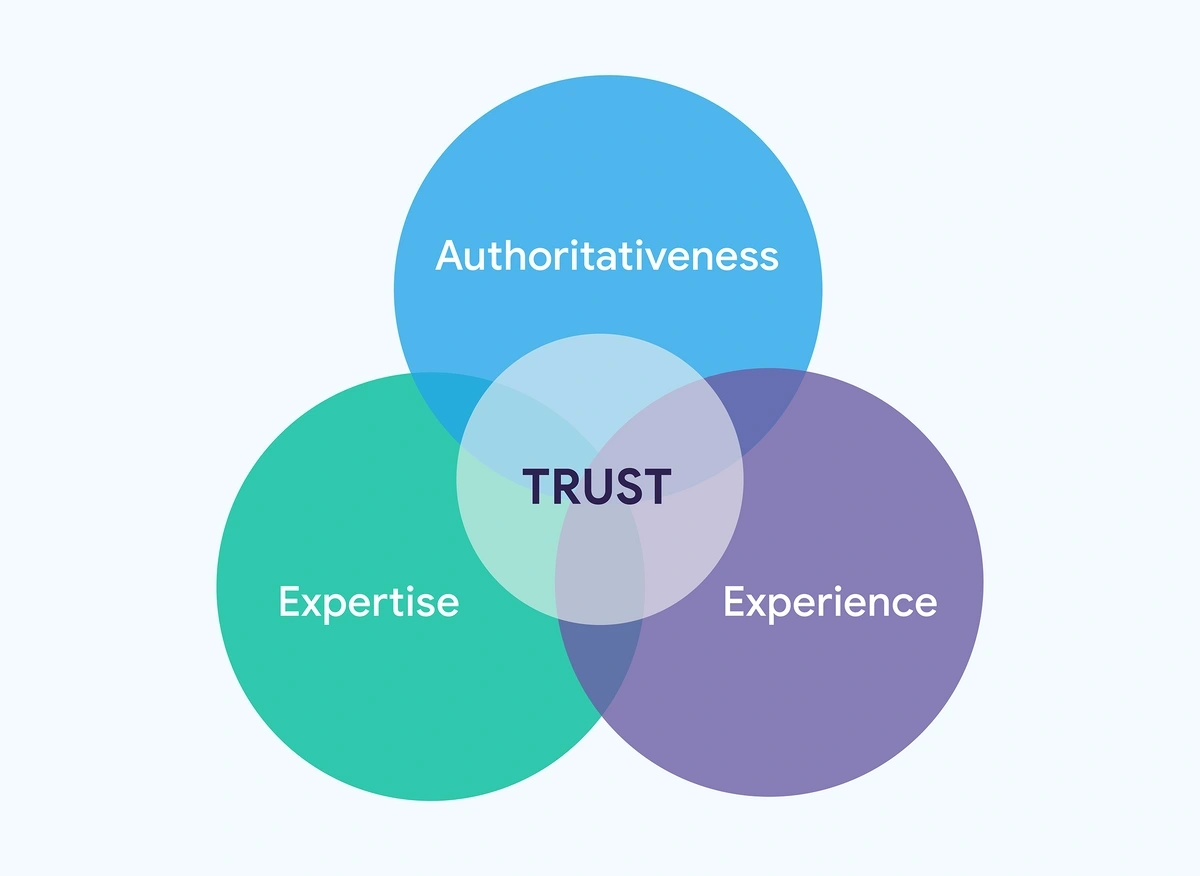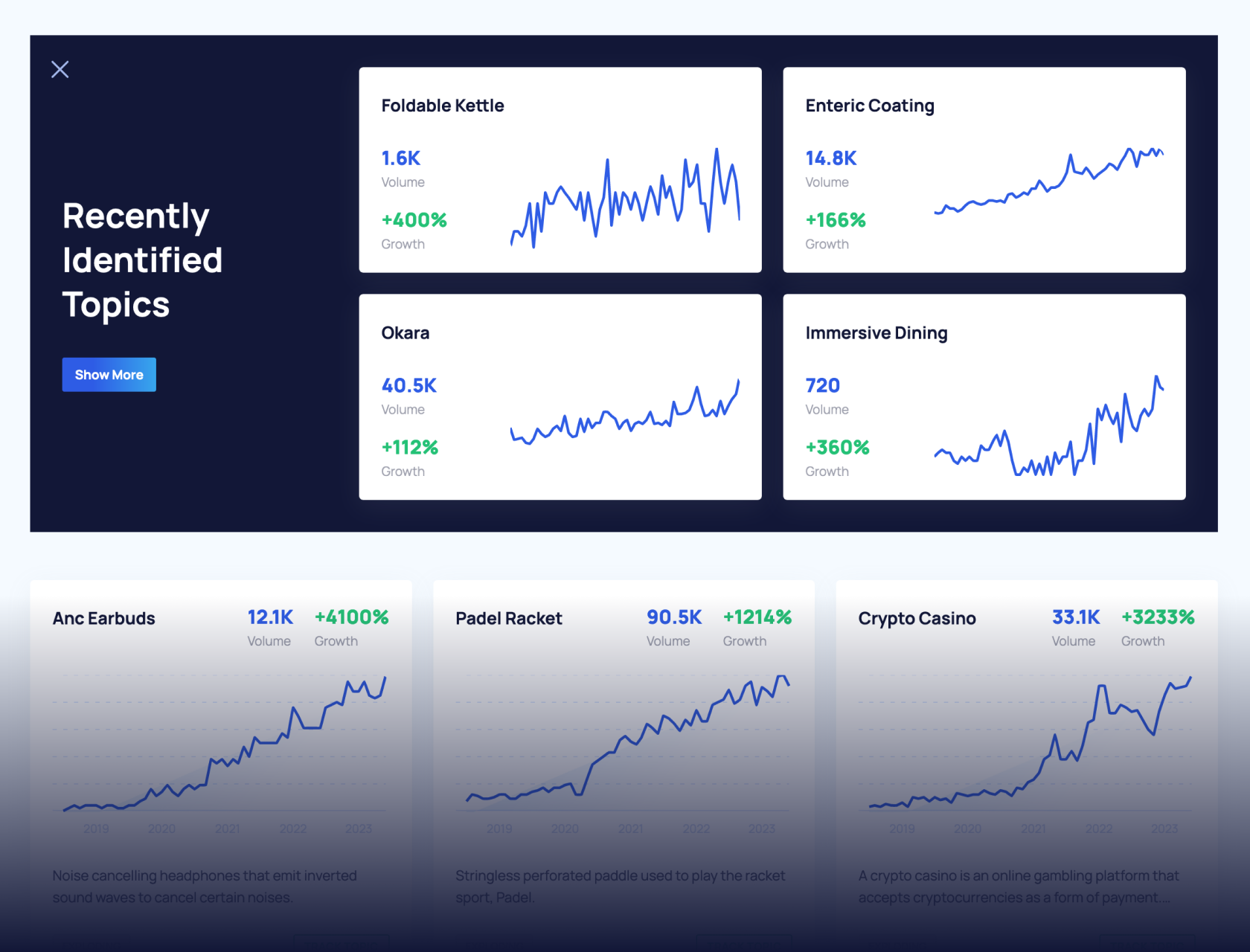
Google Rank Checker: How To See Your Position on Google
Here’s a stunning fact that I recently learned:
If you’re not on the first page of Google, 99+% of searchers will never see your site.
To make sure you’re getting valuable traffic, you’ll want to check your position in Google’s search engine results pages (SERPs) and fight for a spot on the first page.
You can use the Google rank checker above to do this - and it’s free.
Why You Need to Check Your Google Rankings
According to the latest SEO statistics, Google gets more than 90% of all search traffic.
Tools like ChatGPT don’t come close - at least, not yet.
And ranking on the first page is super important.
- 54% of all clicks go to the first 3 Google search results
- Just 0.44% of searchers visit the second page
If you’ve never looked into SEO before, ranking a web page on the first page of Google might feel impossible. But you can do it with the right tools.
Get More Search Traffic
Use trending keywords to create content your audience craves.
As a first step, I recommend checking your current positions using the tool at the top of this page, and I’ll show you how.
How often should I check my rankings? As an SEO beginner, checking once a week is enough. This will allow you to review the overall trend without worrying about normal daily fluctuations.
How to Use Our Google Rank Checker: Step-by-Step Guide
Ready to discover where your website ranks on Google?
Scroll up to our free keyword rank checker at the top of this page.
Enter your website domain (or a competitor's domain) and click “View Rankings".
Review your results to see which SEO keywords are currently driving traffic to your site.
These may not be the keywords you expected - but don’t panic.
Let’s run through the columns. (You can create a free Semrush account to explore the data in more detail)
Keyword, Rank, and Traffic %
The Keyword column in the Google rank checker shows you the keywords that are driving the most traffic.
Our Google rank checker tool estimates the amount of traffic that each keyword is responsible for, which is displayed in the “Traffic %” column.
Here’s an example of a coffee retailer whose brand name drives more than 68% of its traffic.
This site also gets 1.1% from the commercial keyword “organic coffee”.
Commercial keywords, like a brand name, satisfy searchers who are looking to research products. "Organic coffee" is also a commercial keyword since searchers tend to be looking for a product to buy.
Our free keyword checker doesn’t show you the search intent, but a free Semrush account will provide you that information, so it’s worth signing up to verify the intent.
Back to our position checker. The “Rank” column shows you the current ranking position in the Google results when someone searches for the keyword.
Remember: the vast majority of search engine traffic goes to positions 1-3. (That means the first, second, and third result, once you scroll past the ads and AI overviews in the search results.)
If you see an arrow next to your ranking, it indicates that there has been a recent change. Green arrows show improvement in the keyword rank, and red arrows represent a decline.
What if rankings suddenly drop? If you see a red arrow, it indicates your rankings dropped on Google. Don't panic! Remember that Google’s systems constantly make small adjustments to rankings.
Your site could move up and down from one day to the next, based on things like how people are engaging with your site.
That’s why there’s no need to check your rankings every day in most cases.
Seeing a consistent fall in your position? If the drop is significant, and gets worse over a few weeks:
- Run a Site Audit in Semrush and see if there are any new technical issues with your site
- Check Semrush Sensor to see if there’s a Google update happening
- Google the keyword and read the content in positions 1-3: have your competitors updated or improved it recently?
SEO isn’t an exact science. There are a ton of moving parts. The trick is to understand why the drop happened so you can course-correct.
Volume and Search Trend
“Volume” is a measure of how many times a keyword is searched for in an average month.
Keep in mind that search volume is an estimated value. (I’ve targeted keywords with a volume of “0” and still generated traffic that converted well.)
You can get more clues from the “Search Trend” charts at the end of each row. These charts show you how the volume is changing - super helpful when tracking seasonal keywords and trending topics.
KD % and CPC
These two metrics indicate how much competition you have.
First, “KD %” stands for keyword difficulty percentage. This metric is most useful for small sites that are still building organic traffic (which means traffic from Google and other search engines).
While starting SEO as a beginner, it’s usually best to focus on low difficulty keywords.
Low difficulty and high volume is the ideal combination.
It can be difficult to find keywords with those characteristics. They are out there, though, and you can use this free keyword difficulty checker to find them.
Moving on, “CPC” stands for cost-per-click. It’s a metric most used in search engine marketing.
The cost-per-click is the amount you would have to pay for a click if you ran ads for that keyword. (The more people are competing for it, the higher the cost.)
While CPC isn’t an SEO metric, it can be handy to know which keywords are attracting the highest bids. This indicates there are brands competing for the traffic from that keyword and consider it to be worth paying for.
# of Results
Number of results is a simple metric that shows you how many results show in Google’s results when you search for the keyword.
Take this with a pinch of salt!
Semrush is very accurate overall, but the number of websites, web pages, and domains is constantly changing. The number of results column just gives you a general idea of what you’re up against.
Want to Spy on Your Competition?
Explore competitors’ website traffic stats, discover growth points, and expand your market share.
How to Get on the First Page of Google: Beginner's Strategy
If you’re thinking, "how can I get my website on the first page of Google?", I’ll try to help.
Let’s assume you want to do some DIY SEO to improve your position.
1. Find the Right Keywords
Before you can rank higher on Google, you need to decide the specific keywords to target. The first step is getting into the head of a customer and ‘speaking their language’.
What would your ideal customer search for if they needed your services?
If you’re stuck, there is an easy way to take a shortcut.
Use the Google rank checker (top of this page) to check a competing website. See what they rank for.
That can kick-start your brainstorming process.
The actual keyword itself isn’t the only factor. If you’re a beginner in SEO, it’s best to target keywords with lower difficulty first.
For example, specific phrases like "affordable plumber in Chicago" are easier to rank for and more targeted than just "plumber".
2. Create Quality Content That Answers Questions
Google wants to show users the most helpful content.
Professionals who write and edit a ton of content (like me) hear this phrase all the time. But what does ‘helpful’ actually mean?
Google has a set of standards for its quality for reviewers to follow when assigning a Page Quality (PQ) rating. It’s called the Quality Rater’s Guidelines. And it reveals precisely what Google is looking for in a high quality web page.
The QRG says:
“High quality main content should be satisfying for people visiting the page. High quality main content shows evidence of effort, originality, talent, or skill. For informational pages, High quality main content must be accurate and consistent with well-established expert consensus when such consensus exists.”
So it’s clear that you need to:
- Answer the searcher’s question
- Put a decent amount of effort into creating the page
- Make it original and unique
- Demonstrate talent and skill
- Ensure the content is accurate
- Ensure it is consistent with expert consensus (in other words, no controversial clickbait or harmful advice)
The guidelines also state that you should not rely heavily on AI-generated content as a fast way to produce large amounts of content. It might indicate a lack of effort. The QRG says:
“The Lowest rating applies if all or almost all of the main content on the page (including text, images, audio, videos, etc) is copied, paraphrased, embedded, auto or AI generated, or reposted from other sources with little to no effort, little to no originality, and little to no added value for visitors to the website.”
Google also wants to see that your business is directly connected to the type of content that you create. Writing content around a specific topic, or niche, is called building topical authority.
And to demonstrate that your business knows its stuff, you’ll need to show evidence of EEAT.
EEAT stands for expertise, experience, authoritativeness, and trust. Google has created a diagram to explain how trust is supported by the other three factors.
If your content creators are experienced, have known qualifications, or can prove their expertise in another way, people will trust what they say.
For example, a nutritionist who writes about fitness topics is likely to be considered a trusted source of information about supplements.
3. Optimize Your Page for Search Engines
It would be great if you could write interesting content and instantly achieve a great ranking position.
But quality is not enough on its own.
Once you have good content, make sure Google can understand it. Optimization is the final step in the process.
- Make your topic clear in the title and make sure your content answers the searcher’s question
- Use a logical structure with useful headings, so people can find what they need
- Include semantic keywords if they support the core information on the page
- Link to helpful resources on your site, so people can find them easily
Content optimization is a big topic. These are just the basics. We’ve got more tips in this guide to improving on page SEO.
Once you’re happy that you’ve optimized your content, go ahead and publish it.
How long does it take to rank on Google? For new websites, it typically takes 3-6 months to start ranking for less competitive keywords. For more competitive terms, it can take 12+ months of consistent effort to achieve a good keyword ranking position.
4. Update Content Regularly
Content that's outdated loses rankings over time.
There can be many reasons for this, and I touched on some earlier:
- Google’s core updates can change rankings significantly
- Competitors might copy your keywords to push your position on Google down
- The intent behind search queries can change
- Content becomes less relevant as it gets older
To combat this, you can:
- Add new information to existing articles
- Replace outdated statistics with current data
- Expand your content to cover topics more thoroughly
- Fix broken links and outdated information
Content updates should be part of your SEO maintenance strategy. For more information, you can check out our guide to content audits, which includes a free template.
More Free SEO Tools and Resources
Hopefully, you’ve learned how our Google rank checker can help you to get more traffic to your site, so let’s clear up a few questions before I wrap up.
Do I need to pay to rank on Google?
No, you don’t need to pay to rank on Google. You can pay for Google Ads; they appear at the top of results. But organic rankings come from creating helpful content and following a good SEO strategy.
What free tools can I use to improve my position on Google?
Fortunately, there are a ton. Here are some I recommend you start with:
- Semrush free SEO tools: links to a suite of super helpful SEO tools that are free to use
- Keyword Tool: generate 750+ free keyword suggestions from Google Autocomplete and other platforms
- AlsoAsked: Research People Also Asked questions for 3 keywords every day
That said, don’t sign up for a bunch of tools that will overwhelm you. Remember these key SEO tips:
- Our free Google rank checker will show you where you stand, so be sure to bookmark it before leaving
- If you create content that answers people's questions, you’re already halfway to improving your position on Google
- Optimize your content and update it periodically - don’t expect it to rank without fine-tuning
From here, I recommend these additional SEO resources for beginners who want to rank on Google:
- Our SEO copywriting checklist
- A list of the best SEO newsletters for up-to-date tips and techniques
- This free trial of paid Semrush tools
Stop Guessing, Start Growing 🚀
Use real-time topic data to create content that resonates and brings results.
Share
Newsletter Signup
By clicking “Subscribe” you agree to Semrush Privacy Policy and consent to Semrush using your contact data for newsletter purposes
Written By


Claire is the Lead Editor at Exploding Topics, where she uses her extensive SEO and content strategy expertise to drive growth. ... Read more

